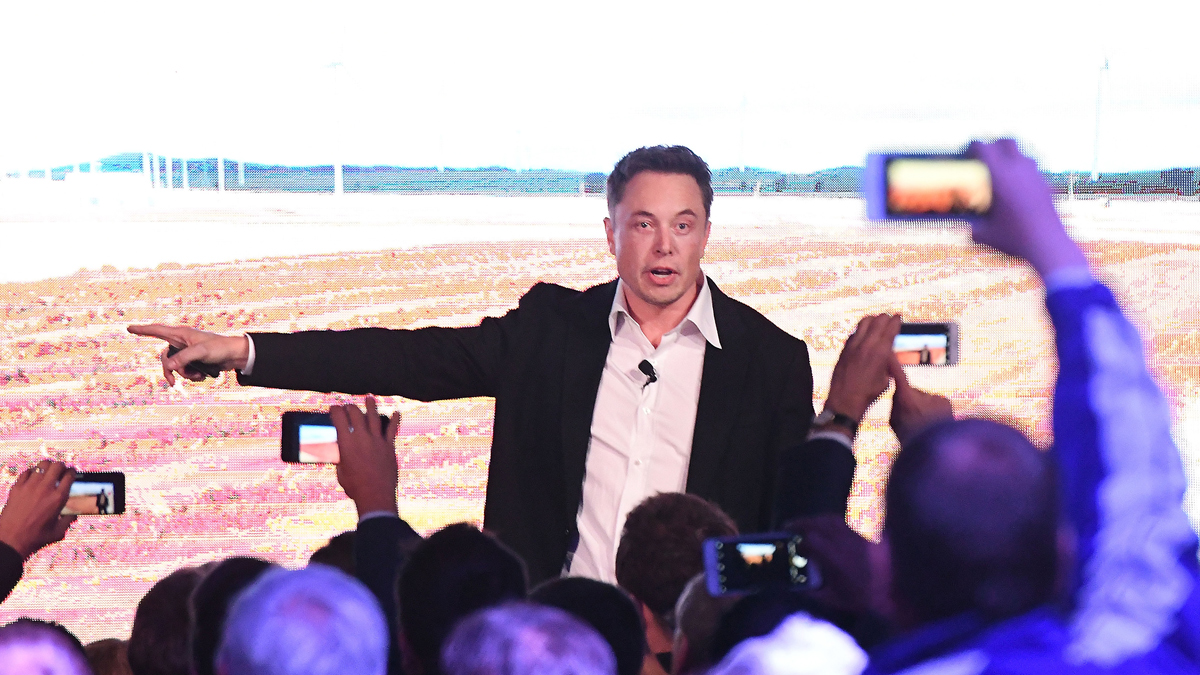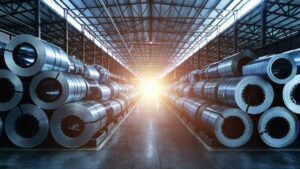SA is officially a renewable energy powerhouse… and the private sector is starting to cash in

Elon Musk kicking it off at the Tesla Powerpack Launch Event at Hornsdale Wind Farm in September, 2017.
South Australia’s green energy credentials are making it a favourable place for projects looking to lead the way towards a more sustainable future.
Around 60% of SA’s electricity needs were serviced by renewables in 2020, and up to 100% at times, a striking difference from its reliance on fossil fuels only two decades ago.
Seemingly at odds with Canberra’s confused stance on renewables, the state’s Liberal government further demonstrated its commitment to a renewable energy transition by launching the latest South Australia Climate Action Plan late last year, comprising 68 actions across seven focus areas to increase investment and jobs in low emissions out to 2025.
Using natural resources to build a climate-smart resource sector
At the launch of South Australia’s Climate Change Action Plan 2021 – 2025, Minister for Environment and Water David Speirs said that it contained the Marshall government’s approach to building a strong, climate smart economy and further its intentions to reduce greenhouse gas emissions.
“Demand for low emissions and climate smart products is growing, and South Australia is well equipped to use our abundance of sun, wind and other natural resources to take full advantage of this growing demand,” he said.
The government hopes its actions will help the state progress towards its goal to reduce greenhouse gas emissions by at least 50 per cent by 2030 and achieve net zero emissions by 2050.
Key objectives within the seven focus areas include accelerating South Australia’s renewable energy economy, developing a world class hydrogen industry, attracting and growing businesses and industries powered by renewables, and developing a climate smart resources sector.
Companies eager to participate in South Australia’s green economy
A South Australian government spokesperson told Stockhead that the state’s successful integration of renewable energy is creating a competitive advantage for business in the state, including resource companies, by reducing the price of electricity, improving reliability, and slashing the emissions of the products they produce.
One such example is Project Energy Connect, the $2.3 billion interconnector between South Australia and New South Wales, which will create a freeway for renewable energy produced in South Australia to the eastern seaboard.
Companies within the resources sector in South Australia have an opportunity to benefit from the state’s green energy positioning.
Magnetite Mines (ASX:MGT)
MGT’s Razorback Iron Ore Project within the Braemar Iron Ore Formation would produce 2.7 million tonnes per annum of high-grade concentrate over an initial mine life of 23 years at a capital cost of US$429-506 million.
This is around a third of the $1.5b-plus price tag a study by previous management in 2013 showed the project would carry to enter production.
Some of the capital and operating cost reduction will come from leveraging cheap wind energy available on the SA grid rather than producing power on site.
This hasn’t gone unnoticed by market watchers. Peloton Capital resource analyst Ian Spence noted 65% of grid power in the emerging Braemar iron ore region in SA’s northeast is currently sourced from renewables, with an expectation that it will shortly increase to nearly 90%.
That is something in Magnetite Mines’ favour as investors and consumers of iron ore seek out products with greener credentials.
OZ Minerals (ASX:OZL)
Other companies such as copper miner Oz Minerals have demonstrated their commitment to a low-carbon economy through the establishment of a hybrid energy plant at the Carrapateena Project in the highly prospective Grawler Craton, around 160km north of Port Augusta.
The hybrid energy plant has been built as a standalone collaboration platform to allow start-ups, suppliers, researchers, and academics to safely use the site for trials and experiments.
On March 19, OZL hosted a virtual opening for the development, where South Australian Minister for Energy and Mining Dan van Holst Pellekaan said Oz Minerals has been a leader in embracing change.
“While many leaders have great ideas, they rarely have the opportunity to trial prototypes on working mine sites,” he said.
“The state government was very proud to support the hybrid energy plant with a $1 million grant under the Renewable Technology Fund to help make this project a reality.”
Experiments undertaken at the plant will tackle the challenges facing mining companies around the world such as optimising electricity and fuel demand, the integration of renewable energy, storage solutions, and electric vehicles to generate a raft of benefits.
The hybrid energy plant’s initial setup includes solar PV, battery storage, diesel generation and a micro-grid controller.
Havilah Resources (ASX:HAV)
Havilah’s Kalkaroo Copper-Gold-Cobalt Project in South Australia’s northeast comprises more than 16,000 sq km of highly prospective mineral tenements.
The company has been undertaking conservation and environmental enhancement projects on the land where the Kalkaroo deposit is located and have said it’s their goal to utilise natural geographic advantages to maximise the generation and use of renewable energy.
Havilah is commissioning its own pilot solar-wind-battery power generation system at the Kalkaroo exploration base camp, taking the company a step closer to achieving its goal of developing a potential future source of ethical copper and gold (plus potentially cobalt, REE and molybdenum).
ESG focus
As the world moves towards electric vehicle manufacturing and renewable energy generation, critical minerals such as copper, graphite, and lithium will continue to remain in demand.
But as retail and institutional investors increasingly align themselves with environmental, social, and corporate governance (ESG) focused stocks, companies are increasingly starting to incorporate ESG factors into their DNA.
Magnetite Mines head of stakeholder engagement Allan Kane told Stockhead that water was a key component of the company’s ESG program at the Razorback Iron Ore Project.
“We’re situated in a sheep grazing area, and rainfall and the availability and the security of water supply is really important to the farmers and the pastoralists that surround us,” he said.
“And they’re making sure that we are aware of that when we’re designing our project and looking at what options we have for our own water supply.”
He said it was important for the company to understand the context of the area it’s working in on an environmental, land management, and social perspective.
At Stockhead, we tell it like it is. While Magnetite Mines is a Stockhead advertiser, it did not sponsor this article.
Related Topics

UNLOCK INSIGHTS
Discover the untold stories of emerging ASX stocks.
Daily news and expert analysis, it's free to subscribe.
By proceeding, you confirm you understand that we handle personal information in accordance with our Privacy Policy.








